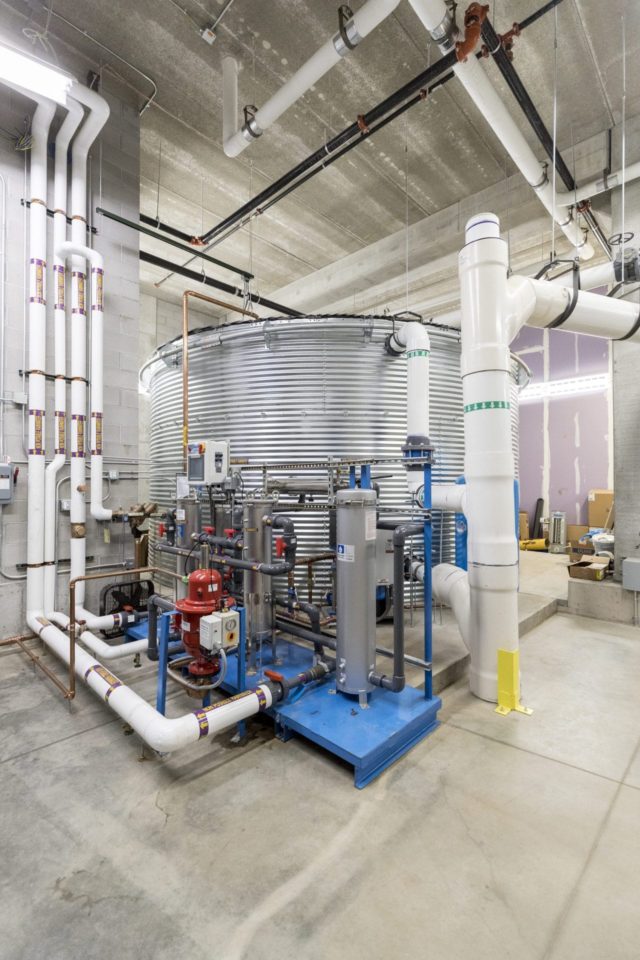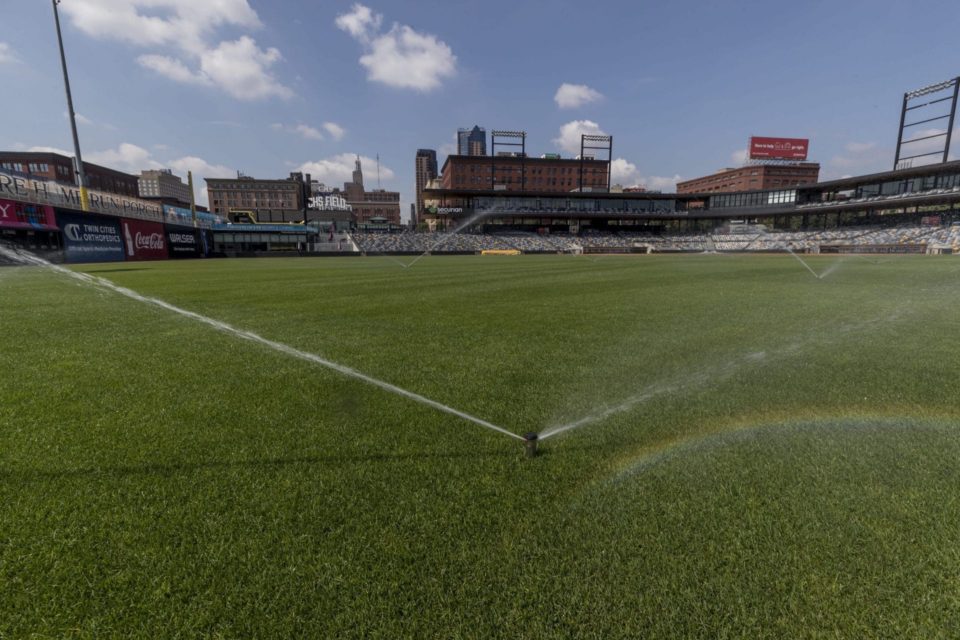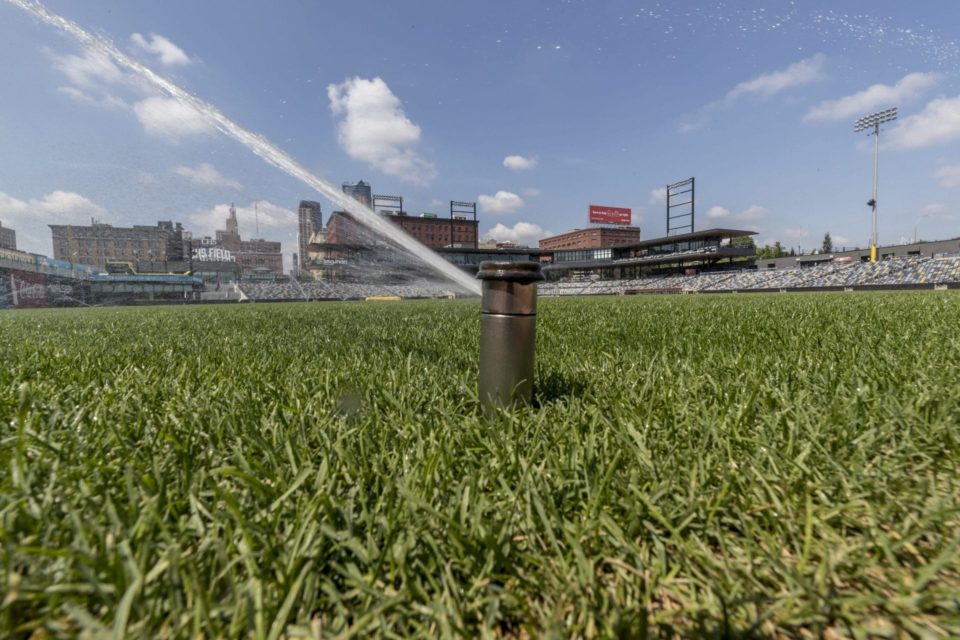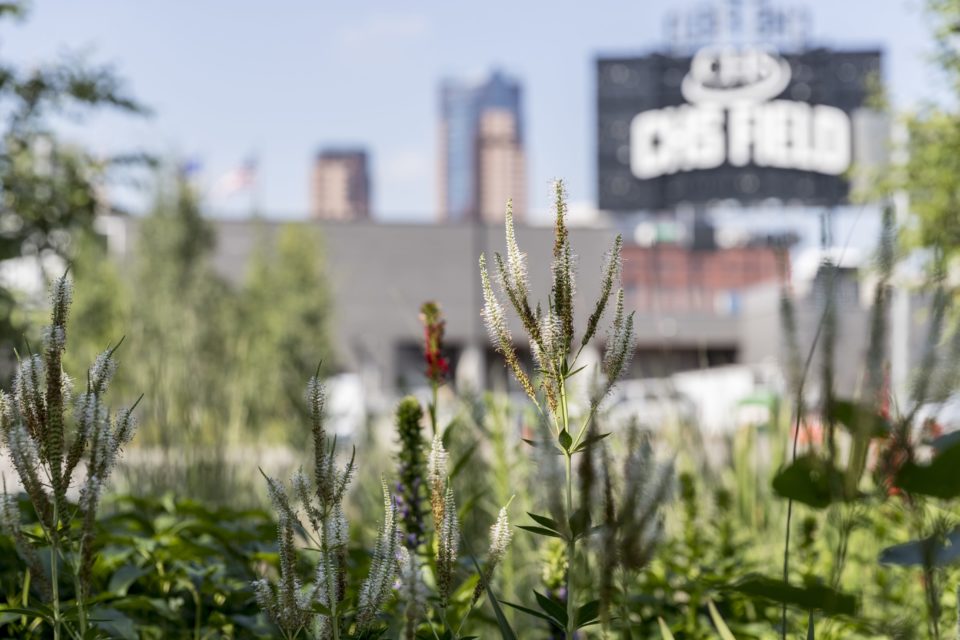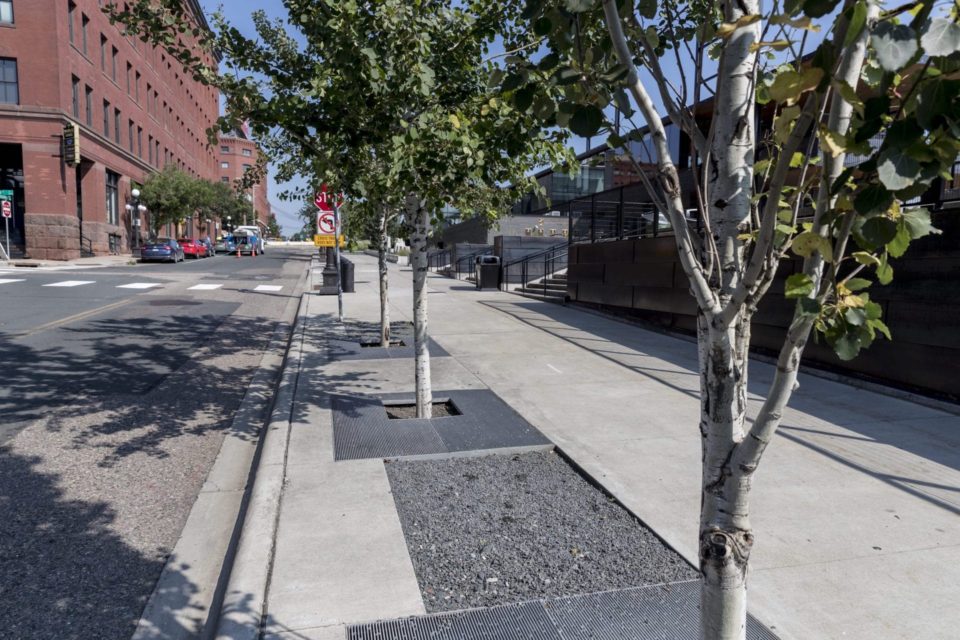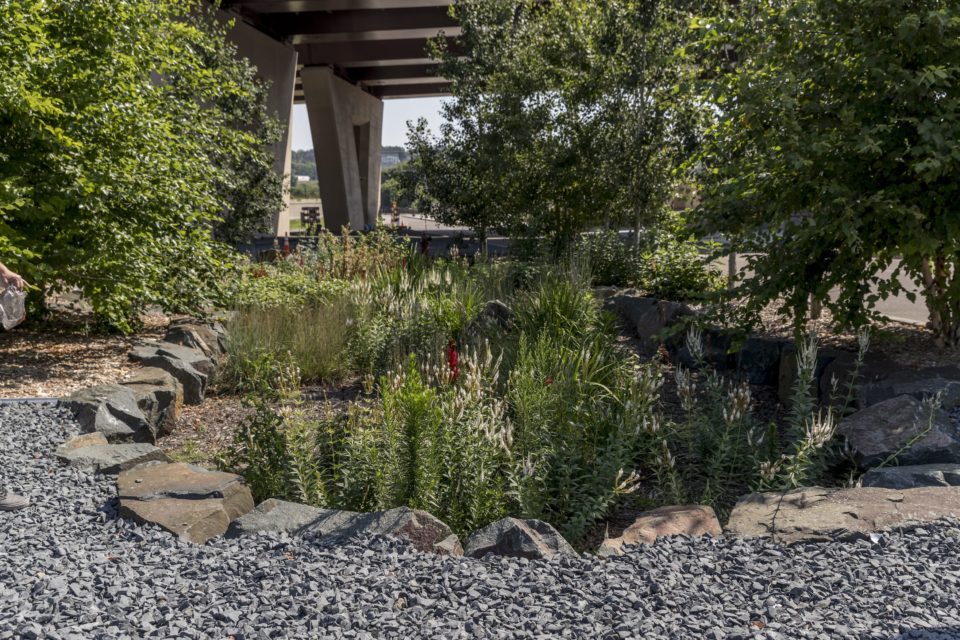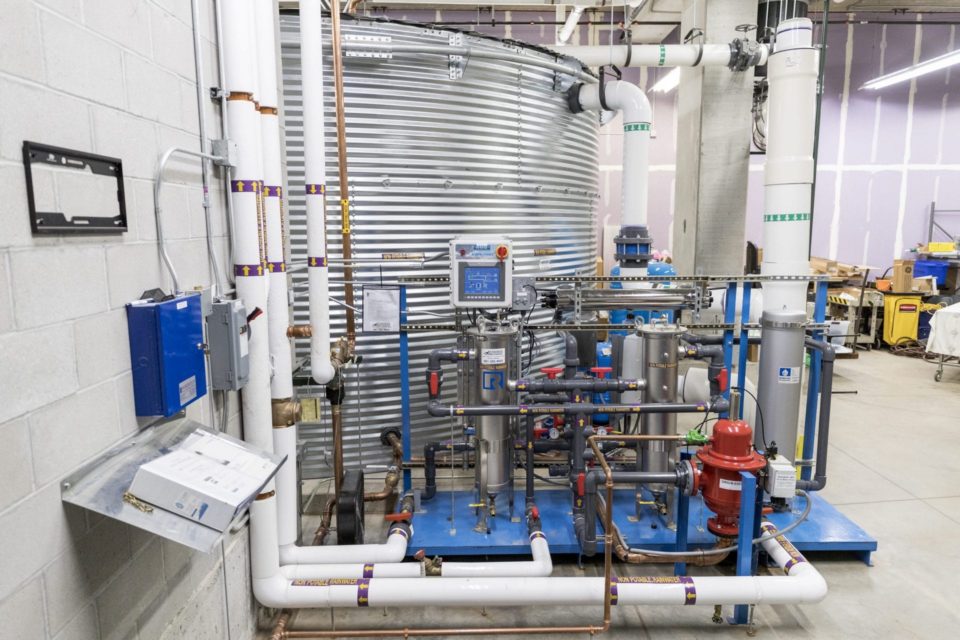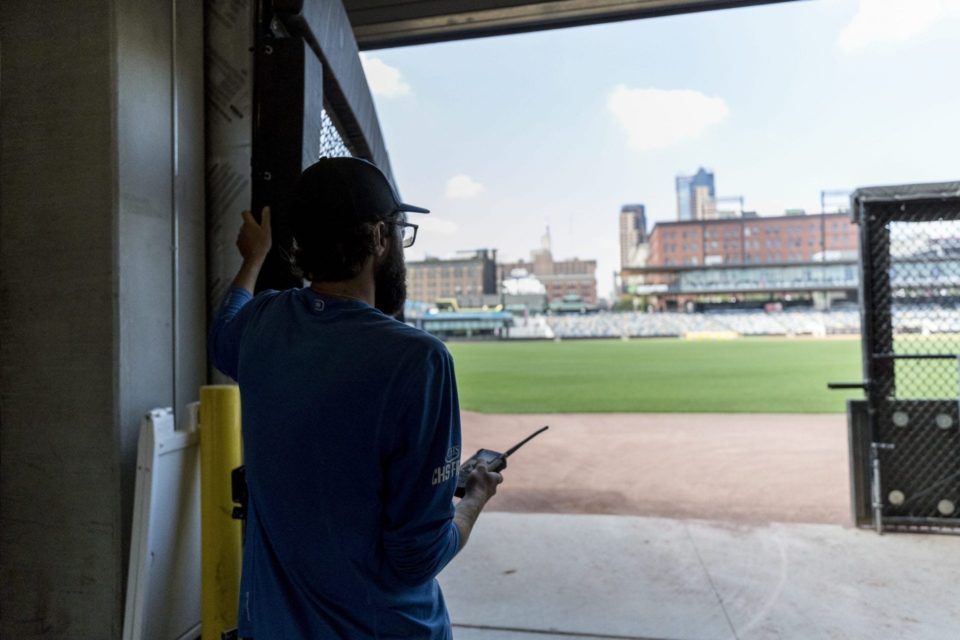Conservation Through Collaboration
CHS Field – the home of the Saint Paul Saints minor league baseball team – rises just steps from the Mississippi River in the city’s historic Lowertown neighborhood. Hosting more than 400,000 visitors per year, CHS Field requires large amounts of water for irrigation, drinking and other purposes. To reduce water use as well as pollution runoff flowing to the river, CRWD, the City of Saint Paul, the Saint Paul Saints and the Metropolitan Council collaborated to create unique solutions for water conservation.

